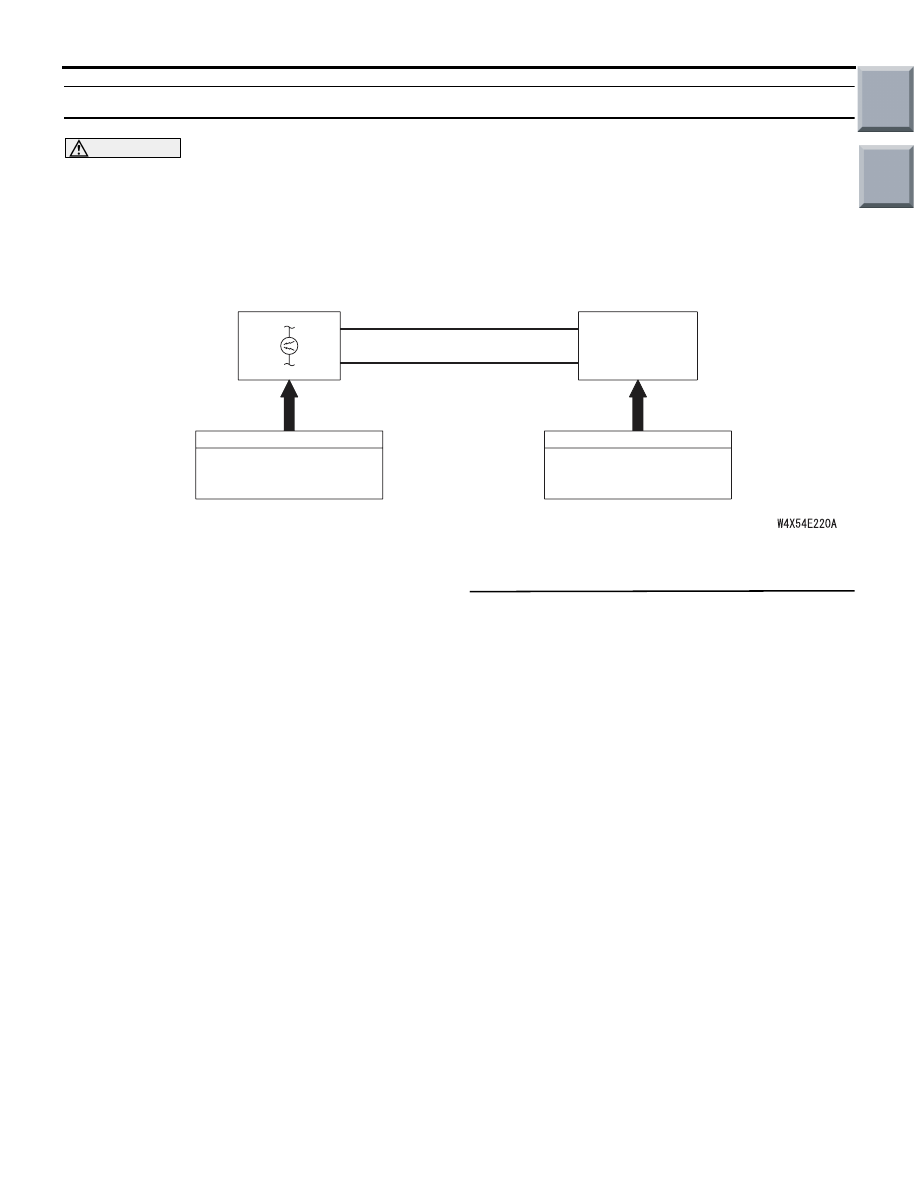Mitsubishi Colt Ralliart. Manual - part 326

SYMPTOM PROCEDURES
SMART WIRING SYSTEM (SWS) NOT USING SWS MONITOR
54B-48
INSPECTION PROCEDURE B-2: Door-ajar warning buzzer function does not work.
CAUTION
Whenever the ECU is replaced, ensure that the
input and output signal circuits are normal.
NOTE: If the CAN bus diagnostics is carried out, the
door-ajar warning function is triggered.
COMMENTS ON TROUBLE SYMPTOM
The ETACS-ECU operates this function in accord-
ance with the input signals below.
• Ignition switch (IG1)
• All of the door switches
• Vehicle speed signal
If this function does not work normally, these input
signal circuit(s) or the ETACS-ECU may be defec-
tive. Note that this function can be disabled/enabled
by the customise function (default setting; enabled).
In order to change the setting, the SWS monitor is
required.
POSSIBLE CAUSES
• Malfunction of the CAN bus line
• Malfunction of the door switches
• Malfunction of the ETACS-ECU
• Damaged harness wires and connectors
DIAGNOSTIC PROCEDURE
Step 1. Check the power supply circuit.
When the ignition switch is turned to the LOCK
(OFF) position, check if the hazard warning lamps
illuminate.
Q: Is the check result normal?
YES :
Go to Step 2.
NO :
Refer to Inspection Procedure A-2 "When
the ignition switch is at the LOCK (OFF)
position, the functions do not work normally.
Check the battery power supply circuit to
the ETACS-ECU
."
Door-Ajar Warning Buzzer Function
ETACS-
ECU
SPEED SIGNAL
COMBINATION
METER
CAN COMMUNICATION LINE
(CAN_L LINE)
CAN COMMUNICATION LINE
(CAN_H LINE)
INPUT SIGNAL
INPUT SIGNAL
· DOOR SWITCHES
· IGNITION SWITCH (IG1)
· TAILGATE SWITCH
Main
Index
Group
TOC